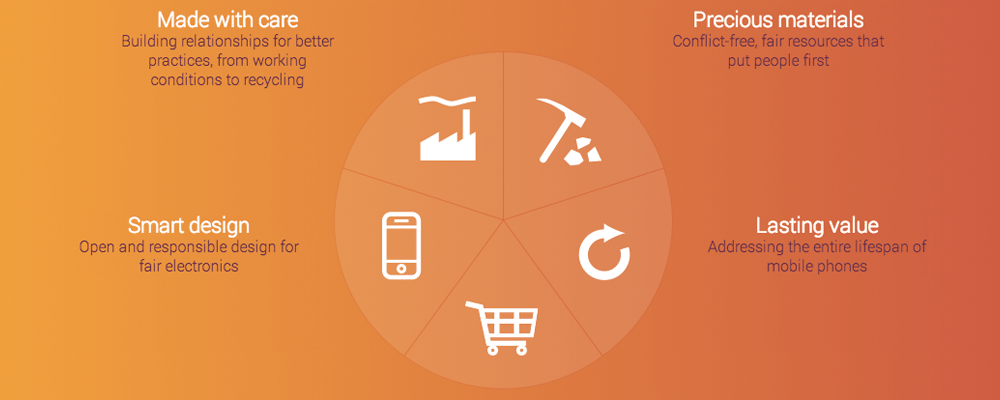
A Bit More on our Design Approach
As an industrial design engineer with a special interest in technologies for sustainable development, FairPhone’s open and inclusive approach has always been enlightening to me. In the past I had been quite frustrated seeing how corporations lost their passion for what they are supposed to do in place of their financial due to shareholders.
But, can we keep this profit-generating economy without asking what are the limits we are breaching? Do we want to keep the pace of technology development at any price?
At FairPhone I have learned that if you want to get somewhere, you only have to start dreaming and develop a big vision. Then get there step-by-step asking people to help you on your journey. We are getting there, we want to reach technology that really matters. Not the thinnest, not the smartest, but the fairest. We are ages ahead where we were one year ago – when I started at FairPhone as an intern – and we will be making even bigger positive steps in no time.
One of our focuses is what we call “smartly designed” which to me is actually the center that brings all our other objectives together in the same product. For far too long we have used a quite simplistic rationale in which design = beauty = product specifications. But isn’t the end-of-chain also something to be designed smartly? On where you get your materials? It is definitely important for us at FairPhone.
There is a chicken-and-egg story here, in which consumers demand more megapixels, more gigas of memory … and which the industry is elegantly able to deliver at the right time to keep their competitive advantage. Or is it the other way around? Luckily there is a new generation of investors that believe in the profit that social impact brings and are able to raise questions about how these products are made and what is the story behind them, who are the people making them. It is also thanks to that generation and communities like Bethnal Green Ventures (where we matured) that we exist today as a social enterprise. And that is not trivial: after more than two years being a “campaign project” becoming a company makes you go through all the same challenges other companies have.
Let’s not forget though that “It is the invisible connection of all these people that makes it possible that we have something as simple as a pencil or complex technological products like smartphones in our hands” as our Bas van Abel states in his article “If you can’t open it you don’t own it” for the Open City Project (July 2012).
We know there is a lot of bad stuff, but we also want to highlight the positive. What about the amazing work being done by the Solutions for Hope Network and the Conflict-Free Tin Initiative around conflict minerals or by organizations like Closing the Loop, around e-waste. Why can’t we create value in the market around these interventions that make their contribution for a better world, and try to bring everything together in one product?
Let’s take shared responsibility, let’s not turn away from complex issues, but find a way to work together towards something that is BETTER.
Design has a very important role here. It is at the design table (whatever you design, business or products) that you can make decisions that have an influence beyond your own surroundings. That is why we want our product to have double SIM card capacity: we will need fewer phones and they will have more value in second hand markets in emerging economies. Or the decision of talking with different parties that can help us deliver a product ready for different open source operating systems. Because you should be able to choose and play around with the software if you want (warranty coverage is another topic are looking into).
This is a very relevant discussion for FairPhone’s team. In the end, consuming is a political act, but to make the right decision you need to understand how your products are brought to life. We aim to open the systems behind what we consume, so that you can make the right decisions. This phone is yours: if you can’t open it, you don’t own it.
Share this post
The post you are currently reading is an AMP HTML document; an optimized version for mobile usage to increase loading speed and decrease data usage. To see our full website you can visit our own mobile version of this post.